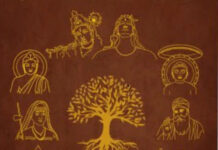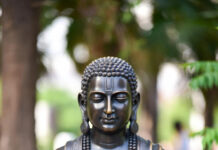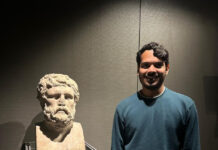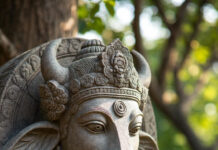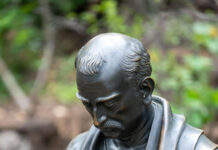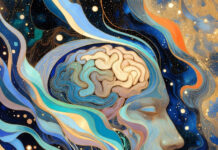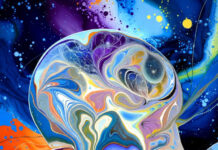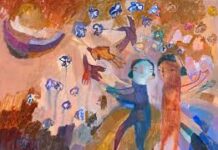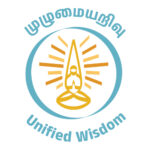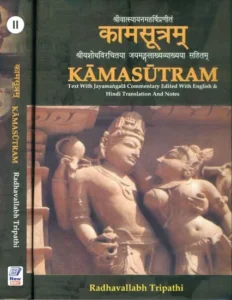
Dear Jayamohan,
This is what my North Indian friend said while talking about Indian art.
“When Jainism and Buddhism were influential among the common people, concepts like asceticism started to be followed by the people. Simultaneously, numerous wars claimed a significant number of lives, leading to a notable decrease in the population. It was at this moment that the Hindu kings forced Vatsayana to write “Kamasutra.”
The friend mentioned that Vatsyayana was compelled to write this in order to challenge the asceticism of Jainsm and promote sexual interest among people, to which he agreed and wrote.
Is this true? Do the sculptures of lust in Hindu temples pique people’s interest and suppress important principles of Jainism and Buddhism, such as celibacy?
with love,
Na. Sattappan.
Dear Satappan
In India, we have some popular frames of thought. We create these templates of ideas in a highly simplified manner. Hence they are very appealing to simple minds, at the same time, while saying them, a thinker’s posture is formed for these simple minded persons. So, people tend to share these posts more frequently on social media platforms like Facebook. People also commend the “scholars” who communicate at this level.
The first template involves approaching everything with a simple application of practical logic, which is either based on current power politics or mundane life.
For example, take this popular theory. Why did our ancestors build big temple towers? They placed the seeds in metal jars, known as ‘kalasas’, atop the towers. So, even a massive flood will not destroy the seeds. We shouldn’t ask a simple question: if that was the intended purpose, a high stone pillar would suffice; why are these expensive and artistic towers necessary?
Then comes this question: why are there idols of lust in the temple? Some people used to argue that the purpose of these lust idols was to encourage people to observe and practice various sexual postures. Regrettably, those who tried to engage in these sexual postures ended up spending years in hospitals due to severe backsprains.
For those who say this, there is no art, no aesthetics, and no symbolism in the world.Historiographical tradition, or cultural heritage, has no role in thought.
The second template. Hinduism created all its ideas and traditions with the sole intention of eradicating the Jain and Buddhist traditions. This group cannot comprehend how a religion, older and more powerful than Buddhism, could have crafted certain beliefs and codes for its own benefit.
Leftist analysts in India developed both the aforementioned frameworks. In fact, D.D. Kosambi’s legacy is to approach Indian history and culture with outstanding creativity and to answer deep questions in Marxist historicism. It created multiple openings. However, immediately, these mediocres invaded this area of research and created these ridiculous ideas; as we say in Tamil, “the donkey metamorphosed into a black ant.”
The Kamasutra writing theory contains these two templates. These templates are just as absurd as the other stories written by our pseudocademics.
Since ancient times, Kamasutra has been considered one of the Upavedas. Like Ayurveda [medicine], ,Dhanurveda [weaponry] Gandharvaveda [music] Karanya Upaveda [logic] Kamasastra was studied as part of Vedic tradition. Kama Sastra, by Vatsyayana, is one of the books in the series on this subject. Following the Vatsyayana, there is a long list of books like Kokoga, written by Athiveerarama Pandiya
The composition of the Kama Shastra took place during the Gupta period, a time when Hindu thought was at its peak. During that period, there was a trend of learning and retrieving earlier traditions. This approach also formed Chanakya’s Arthasastra, which is a continuation of earlier books.
Only the educated minority studied Kama Sastra as ‘Upaveda’. It may have been learned in Gurukuls. Shatriyas likely followed it, not the general public. In ancient India, there was no general literacy, especially in sanskrit. The respective clans received their own education through their own system.
If you look at Kamasastra, it is not an aphrodisiac book. The book provides an objective definition of human lust and links it to various cognitive systems. It seeks to make classifications based on the qualities of Sattva, Rajas, and Tamas. It associates kama (worldly pleasures) with artha (earthly life), dharma (cosmic ethics), and moksha ( final liberation). It also links Kama with other Upavedas, such as Ayurveda, Gandarva Veda, and Dhanurveda.
Finally, Buddhism spread to the merchants, then to the working class. Is writing a book like this the only way to spread lust among these people? Who said that Jainism and Buddhism forbade lust among householders? They emphasized only five ethical standards for householders and allowed them to perform all earthly duties freely. The number of monks in these religions is quite small, and celibacy was practiced only by them.
More importantly, can any religion reduce lust? Can any book add it? Our historical and cultural debates transpire at this level; what can we say?
The belief that ideas and arts are ‘conspiracies’ is a mental illness that somehow pervades India. Without eliminating it, one cannot think creatively and meaningfully. Every thought is a part of the totality of human thought, and this totality shapes its structure. To comprehend it, we must grasp the human desire to discover and define the truth of life and the universe. Indeed, it is shaped by numerous social and economic factors. A variety of psychological factors are involved.We must understand its intricate development process without succumbing to simplistic prejudices..
Thinking is always the opposite of simplification.
Jeyamohan
